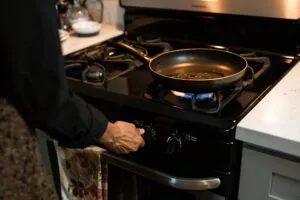
The Best Frying Pans in Canada
Frying pans are a kitchen staple everywhere, due to their ease and versatility in the kitchen. But not every frying pan is made for every job. Knowing the proficiencies or limitations in the kitchen are very important, especially for frying pans. A non-stick pan that is great for eggs might not be the optimal pan to sear a steak on, nor make a tomato-based shakshuka. It is our goal in making this buying guide that users will be able to find at least one pan that will suit them.
Below, you can check our list of the top frying pans in Canada.
Our top picks
How to choose a frying pan
Frying pans are always going to have specific purposes in the kitchen, based on what kind of frying pan you are looking for. Price and durability are always factors to think about when buying kitchen wares, and are very self-explanatory. Size is also important, as overcrowding or underfilling your pan can lead to suboptimal results. Knowing the distinctions between the types of pans in this situation is more conductive.
- NON-STICK – While being the most popular type of fry pan by far, non-stick typically offer less utility than other types of pans. Non-stick are great for eggs, pancakes, seafood, and any food you are concerned might fall apart if you fight to remove it too much. However, due to their non-stick coating, they are less than optimal for searing meat – in certain situations you want that steak or pork chop to stick as the maillard reaction responsible for browning and development of rich flavours benefit from different pan surfaces. Additionally, since you want your non-stick pan to stay non-stick, you should avoid acidic foods in your pan, as it will deteriorate the non-stick coating. But the fact is that non-stick surfaces wear out, and so you should not worry about spending too much on a non-stick pan. There are several kinds of non-stick pans, including Teflon, Ceramic and Granite, but Teflon remains the most popular.
- TEFLON NON-STICK – Your standard non-stick pan, made with a layer of the synthetic material Teflon. While these pans have a reputation for releasing fumes and potentially being hazardous to your health, since 2013 the manufacturing of these pans stopped using the harmful chemical PFOA, and these days are safe as long as you do not overheat them.
- CERAMIC NON-STICK – A more natural alternative, Ceramic non-stick pans are typically made from similar materials to Teflon pans except for a natural Ceramic non-stick coating that is derived from sand. These pans perform well, while being free of fumes.
- GRANITE NON-STICK – As far as misnomers in cooking go, naming a non-stick alternative pan made from carbon steel or anodized aluminum with a porcelain enamel after a type of rock is up there. These pans have inert yet delicate coatings that are better suited for acidic dishes but still do not get along with metal cookware.
- STAINLESS STEEL – The draw to stainless steel for cooking is how unreactive they are and how easy they are to take care of. With no fear of rust or oxidation, these pans are durable and can typically last years, as long as they are cared for. However, stainless steel is a really poor conductor, and a pure stainless-steel construction will leave a pan with many heat spots. This is why many companies offer tri-clad stainless steel cookwear, where a strong conductor of heat like aluminum is sandwiched between two layers of stainless–steel, to improve the overall heat distribution of the pan. These types of pans can be expensive, but make up for it with their versatility and durability.
- CAST IRON – Large, heavy, fully molded from hot iron with handle-through constriction, the cast iron has not changed much over it’s hundreds of years of use. Cast Iron can be incredibly durable, provided you do care for it. Cast Iron is great for browning and searing foods, and is easily on par with barbecue for cooking the best steaks. Due to the oven safe nature of the cast iron, cast iron also are great for thicker cuts of meat and pan pizzas that benefit from cooking under the broiler or in the oven at hot heats. However, you will need to get comfortable with the process of seasoning your cast iron if you do want to get the most out of it.
- CARBON STEEL– Carbon steel is like cast iron’s little brother. Both materials are made from carbon and iron (in different amounts, Carbon steel features less carbon) and try to do the same things similarly, but there are definite advantages between both. Carbon steel provides a smoother surface, and heats and cools quicker than cast iron. Carbon steel heats up more evenly too, and due to its lighter construction, is better suited for sauteing, where the extra heat retention makes cast iron better for searing or browning. However, the smoother surface of Carbon steel allow you to cook eggs or other sticky foods on the surface and not worry about the products breaking apart when it’s time to flip. In most of the other ways, Carbon steel and Cast Iron are comparable, however cast iron is significantly cheaper.
- COPPER – Copper is an excellent heat conductor, meaning it heats quickly and evenly. However, copper is reactive to certain foods, so more and more makers of copper pans are lining the inside of the pan with stainless steel. Copper is also highly expensive, and can require some extra attention if you want to keep it shiny, but is a favourite among chefs in French kitchens for it’s excellent cooking properties.
Why trust us
With so many different frying pans on the market, figuring out which works best for you might be stressful. We spent over 20 hours researching frying pans, to ensure that we only represented quality products in our list. Additionally, I have five years of professional experience working in different restaurant and kitchen settings, while being a passionate home chef in my free time as well.
Best non-stick frying pan
OXO Good Grips Non-Stick frying pan (10-inch)
The OXO Good Grips Non-stick is also our choice for the Best Teflon frying pan.
The OXO Good Grips non-stick frypan is one of the better-performing frypans on this list. Made from hard-anodized aluminum, which strengthens the aluminum and improves the heat exchange, this OXO frypan maintains an even heat distribution, with excellent non-stick performance. America’s Test Kitchen even named the 12-inch version of this Good Grips non-stick pan as their favourite non-stick frypan in a head-to-head comparison with other cookware companies.
This pan has excellent non-stick performance, enough to fry a perfect egg without oil. Combined with the heating distribution that browns pancakes to perfection, the Good Grips non-stick can be an excellent addition to your breakfast toolkit. The slightly angled sides are conductive to flipping or evaporation. Overall, the pan is durable while being light enough that taking this pan out is not a chore in itself.
This pan’s quality speaks to itself, however, there are a few nitpicks about the companies claims. Users who washed this pan in the dishwasher have noticed that the non-stick coating wears quickly, while hand washing this pan keeps the non-stick layer intact. While this is not too bad, claiming it is subsequently dishwasher safe is. For the most part, if you want long-lasting performance from any type of pan, hand washing is advisable. It is also worthy to note that this pan is not induction-friendly.
Overall, users love the OXO Good Grips fry pans, as durable and quality pieces of kitchen equipment that should typically retain their non-stick coating for a while. Users have found that if you treat this non-stick well, it should last you years.
Pros
- Excellent non-stick surface.
- Solid heat distribution.
Cons
- Not induction capable.
Best inexpensive frying pan
T-fal Jamie Oliver Stainless Steel Frying Pan (11 inches)
Tefal, or more commonly known in Canada as T-Fal, is one of the more reputable makers of non-stick fry pans and loved by many. As someone who has used a T-Fal non-stick pan every day for years, I can firmly recommend T–Fal for your kitchen. Not only do they tend to last decently long and are solidly non-stick, but they can be had for affordable prices and can be found nearly everywhere. Collaborating with celebrity chef Jamie Oliver on this pan, you can expect quality.
There are many reasons why T-Fal is a good buy: they feature solid non-stick performance, their signature Thermo spot that lets you know when the pan is ready to start cooking, and for the most part, they are very affordable. This 11-inch pan is primarily constructed from stainless steel, with a thick bottom to redistribute heat, as well as a long stainless-steel handle that is solidly bolted on. The Prometal Pro non-stick coating is durable and PFOA-free and can last a long time with solid, non-stick performance if treated carefully. Additionally, this pan works on all surfaces, including induction stovetops.
However, this pan is on the heavy side, which may be an issue for certain chefs, but the weight is manageable, compared to heavier materials like cast iron.
Users overall wrote many positive reviews, noting this pan has even heat distribution, a great non-stick coating and overall a great cooking surface for all non-stick needs, even browning meat impressively well for a non-stick. For the price, this is an excellent option for a non-stick pan.
Pros
- Solid non-stick performance.
- Affordable.
Cons
- Heavy.
Best frying pan with lid
Cuisinart Chef’s Classic Non-stick (12-inch)
This Cuisinart skillet is a handy non-stick anodized aluminum fry pan with a few bonuses that warranted its inclusion on this list. As one of the only truly 12-inch frying pans on this list, this pan offers a decent size, with an included lid.
Made from hard-anodized aluminum, this pan offers solid durability and heat distribution with a Quantanium non-stick interior that has bonus reinforcement from titanium. Its stainless-steel handle is riveted and designed to stay cool on the stove, while also being oven safe to 500 degrees Celsius – just make sure you wear an oven mitt taking it out of the oven!
However, due to the construction, this pan is not induction capable despite what it may be listed as – a considerable contribution to most of the negative reviews online. This pan has noted issues with warping badly with temperature change, so be careful and let the pan cool completely.
Overall, users seem solidly happy with using the Cuisinart Chef’s Classic non-stick, unless they bought it for their induction oven.
Pros
- Hard anodized aluminum with solid heat distribution.
- Lid included.
Cons
- Not induction compatible.
Best affordable stainless steel cookwear
Tramontina Stainless Steel Tri-Ply pan (10 and 12 inch)
The more I write about kitchenware, the more I realize how essential stainless-steel pots and pans are in the kitchen. While everyone clamours for a non-stick, and cooking aficionados may hold cast-iron in high regard, there are many things a stainless-steel pan can do that neither can optimally. While getting a quality stainless steel tri-ply frypan might be expensive, we feel Tramontina offers an excellent range of affordable stainless-steel frypans.
Tramontina’s Stainless steel is affordable for a quality piece of tri-ply cookware, meaning an aluminum core between a layer of 18/10 stainless steel, and magnetic stainless steel, for the optimal results of each material. Due to this configuration, the pan is oven safe to 500 degrees, making it a great tool for dishes that need to finish in the oven, like pork chops or lamb shanks.
One of the biggest flaws of this pan is how sloped the edges are: while sloped edges are great for sauteing food, the degree that this pan slope reduces the cooking surface on the bottom of the pan drastically. A standard 12-inch pan with sloped sides will usually have 9.5 inches of cooking space, but how angled this pan is mean you lose about a full inch. With a full–clad construction, pushing food more onto the edges of the pan will not risk your food burning, but unfortunately, even the 12-inch pan is on the smaller side and might struggle cooking 4 portions of a meal.
Users are generally big fans of these Tramontina pans, getting excellent quality for an affordable price. Users find this pan heats evenly, cooks food well without sticking for the most part and is easy to maintain and clean, as long as you follow directions. While users wished the sides did not slope as much, this Tramontina pan delivers in every other way you want a stainless-steel pan to deliver.
Pros
- Tri-clad construction all the way up the pan’s sides.
- An inexpensive option for Tri-clad cookware.
Cons
- Sides are too angled so you get less cooking space.
Best stainless steel frying pan
All-Clad 4114 Stainless Steel Tri-Ply (10 inch)
All-Clad is perhaps the most respected name for stainless steel cookware, trusted by cooks everywhere. While All-Clad is a premium product at a premium price, All-Clad boasts superior durability, making it a great “buy-it-for-life” stainless steel fry pan. If you are thinking about kitchen essentials that will last you years down the line, All-Clad is an excellent choice.
All-Clad features excellent heat distribution and sturdy build quality, albeit it seems to require upkeep to keep in solid conditions. With three-ply bonded construction of stainless steel, aluminum and excellent 18/10 Stainless steel that lines the pan, you get the best of both materials. The interior is smooth enough to cook eggs with just a little oil, and the heat retention of these pans is excellent, due to its thick bottom.
However, buying a pan of this price requires a little know-how and dedication. Users will need to be careful cleaning, letting the pan cool first to prevent warping. Discoloration may occur and turn your shiny stainless steel into something far less attractive, but products like Barkeeper’s Friend can be used to reinvigorate the look of your pan. However, overall cleaning is easy, and upkeep will be minimal, compared to a cast iron, for example.
Users love these pans as long-term investments that improve their enjoyment of cooking. Users recommend following washing instructions and cleaning will be a breeze. While pricey, these are great pans to buy for long-term use, and users will attest to the quality of All-Clad pans.
Pros
- Excellent heat distribution.
- Excellent build quality.
Cons
- Significantly expensive.
Best ceramic frying pan
GreenPan SmartShape Ceramic non-stick pan (11 inches)
The GreenPan SmartShape is also our choice for the Best nonstick pan without Teflon.
Ceramic non-stick pans popped up when it was first revealed how damaging PFOA commonly found in non-stick pans was. While no non-stick pans today contain PFOA, companies like GreenPan continue to offer pans featuring ceramic coatings that are certainly safe to cook with, even if you overheat your pan. If you are looking for an alternative to your standard non-stick frypan, we think the GreenPan SmartShape is the one to beat.
The base of the green pan is aluminum, for even heat distribution, and the GreenPan features a non-stick coating that is derived naturally from sand, which is diamond reinforced. The natural construction of this pan means zero toxic fumes even on the highest of heats, as well as a durable coating that is metal utensil safe. However, while advertised as oven safe, only being safe up to 320 Fahrenheit is not oven safe as far as we are concerned – way too low for most foods that benefit from additional cook time in the oven.
As far as performance goes, this is a very non-stick pan that should successfully be able to fry an egg without any oil. While the non-stick surface is in fact very good, the pan reportedly does not retain its heat very well, which may pose an issue if you are doing batches of pancakes or something that requires a little more consistent heat than an egg. With SmartShape’s Magneto Induction Base, this pan should be compatible with all cooktops including induction, however, some users have had issues with the pan’s induction capability.
Users are generally impressed with the quality of the GreenPan SmartShape, as an easy-to-use, easy-to-clean non-stick pan. However, there are a few design flaws that have been noted. While the handle has a heatproof grip, beyond the grip the handle gets very hot, and no colour differentiation makes it easy to burn your hand if you are not careful. Additionally, this is still a non-stick pan with the weaknesses of a non-stick, and if you do use metal utensils or use a dishwasher to clean, the coating will wear quicker.
Pros
- Solid, fume-free alternative to Teflon non-stick coating.
- Lightweight.
Cons
- Not very good heat retention.
- Not appropriately oven safe.
Best oven-safe frying pan
Blue Diamond Cookware Ceramic Non-stick (11 inch)
Another solid ceramic non-stick on this list, this Blue Diamond pan features a stainless-steel construction with a diamond-infused ceramic coating – claiming the coating is 5x times harder and 10x longer lasting. Since diamonds are superconductive, this pan is also better at heating up quickly and cleaning. While there are some issues with what the pan claims it can do, this is still a solid ceramic non-stick to consider if you want an alternative to Teflon.
Typically, pans constructed from stainless steel will incorporate a layer of a more conductive material, like aluminum to counterbalance stainless steel’s issues with heat distribution. This Blue Diamond pan seems to forgo the aluminum, opting for a triple layer of stainless steel. While Blue Diamond seems to imply that their diamond-infused non-stick coating help distributes the heat instead, this is concerning due to the degree to which these pans seem to wear out. However, this pan seems to provide a solid non-stick surface when new that is free from toxins and is oven safe up to 600F – which is by far the hottest temperature I have encountered writing this list, meaning you can put this under the broiler with no doubt in your mind.
The biggest issue with the Blue Diamond nonstick is the degree of non-stick: while some users who are careful have gotten many uses of these pans, others who have exercised caution in caring for these pans have noted the non-stick coating already scratching or sticking within a few uses. While many users have had long-term success with these pans, there at least need to be a big asterisk beside their longevity claims – it is clear that the 10x longer non-stick is a marketing claim rather than being the truth.
Users were overall positive with the result, but the degree of users stating how rapidly this pan wore make me doubt the company’s quality control at the very least. Users overall seem to like these pans, as they provide a solid non-stick performance and look nicer than other non-stick pans.
Pros
- Toxin-free non-stick surface.
- Oven safe up to 600 degrees.
Cons
- Quality control and durability are in question.
Best granite stone frying pan
Ballarini Parma Forged Aluminum Nonstick Frypan
Granite pans are another type of pan that is getting attention as a non-stick alternative to Teflon. While a little on the expensive side, this Ballarini frypan aims to combine the heat distribution of aluminum with a more durable non-stick surface utilizing granite.
The Ballarini Parma utilizes the company’s Gratinum non-stick coating, with impressive non-stick results, as well ease of cleaning, it seems that this coating is successful. With forged aluminum construction, you get great temperature control as well, but in exchange, these pans are thicker and heavier than other non-stick pans. On the handle, a heat-sensitive zone turns red when hot and green when cool to try to help reduce the guesswork in the kitchen, however, it seems like this device fails in time.
However, there are issues that the Ballarini pan has. The granite coating is not particularly stain-resistant, so users who bought this pan for the aesthetic quality as a contributing factor. There are also concerns with quality control, with loose handles and banged-up cookware coming out of the box – but this might be on the shipping process.
Users seem to enjoy cooking this pan, as an effective alternative to Teflon non-stick pans, and clean up seems easy as well if you follow the instructions. While quite expensive for a non-stick, some users swear by these pans, especially if they are treated right.
Pros
- Excellent heat control.
- Solid non-stick surface.
Cons
- Expensive for a non-stick.
Best cast iron frying pan
Lodge Logic Skillet (12 Inch)
While you may be able to secure an heirloom cast iron from a family member that is pre-seasoned from years of use for free, not everyone has access to this holy grail of kitchen kit. Cast Iron skillets are loved due to their unique properties, simplicity and durability, given you take the right steps to season and clean the pan. If you are in the market for a new Cast Iron, Lodge is renowned for making quality cast iron for 120 years.
Cast Iron is one of the simplest pieces of equipment in the kitchen because they consist of only one piece, and they have evolved minimally in hundreds of years of human use. This Lodge cast iron features a thick enough base for excellent heat retention and a slightly pebbled texture within the pan, so seasoning this pan is essential for optimal performance (check out question section for more information on seasoning a cast iron or another type of pan).
Users find that these are great cast iron pans, especially after seasoning. However, there is an assumed level of care that is required when using a cast iron: even if the cast iron comes pre-seasoned, you will need to perform a certain amount of seasoning to maintain the coating. Another big one is cleaning, as you should avoid leaving anything to dry in this pan, which may lead to rust. Placing it in an oven or on a burner to dry will keep this pan from oxidizing,
Users overall are very happy with the Lodge Cast Iron, which provides a certain level of brand quality while being affordable to boot. The one complaint common among users is that Lodge currently employs a pebbly finish on their cast iron, which can increase the stickiness of stuck-on food. While some users have turned to belt sanders (not recommended if you are not handy with the tool already), but as someone with a pebbly cast iron (made by another company), extra seasoning can help this as well.
Pros
- Extremely long-lasting if you treat it right.
- Excellent heat retention for searing meat.
Cons
- Requires upkeep.
- Heavy.
Best carbon steel frying pan
Mauviel M’Steel, Carbon
While the Amazon listing considers this a non-stick pan, this is more just a testament to the smooth surface of carbon steel. While it may require some of the care that cast iron requires to keep, this Mauviel Carbon Steel pan offers improvements on lightness and heat conductivity over cast iron.
Carbon Steel is similar in material makeup to cast iron, with slightly less carbon in carbon steel and a different manufacturing process. The result is a pan that is harder with less heat retention, so it heats up and cools quicker. Just like a cast iron would, Carbon Steel needs seasoning of its own to really shine, but users have found that as long as you use minimal amounts of oil, the seasoning process is an easy one.
Unfortunately, Carbon Steel is not some miracle material that solves all of Cast Iron’s issues. Users who used this Carbon steel over gas find that this outperforms other pans, but uneven heating as found on glass stovetops leads to warping of this pan, where cast iron retains its shape well due to the thickness of the material. Also like cast iron, foods with high acidity should be avoided. Also, this pan only marginally improves the weight issue of cast iron, and it is still heavy compared to some other pans.
Users like how non-stick a seasoned Mauviel carbon steel fry pan is, and find that with care, it offers the longevity of a cast iron. However, this pan only offers marginal improvements over cast iron, and with issues cooking on electric or induction burners, this pan is not an option for everybody.
Pros
- Improvements on heat distribution, weight and quickness over cast iron.
- Smooth surface makes a better non-stick surface than seasoned cast iron.
Cons
- Requires upkeep.
- More expensive than cast iron.
Best copper frying pan
All-Clad Copper C4 (10 -inch)
Searching for “Copper” cookware on Amazon will lead you to many cheaply made copper-coloured cookware – but real copper cookware is easily one of the more expensive materials to cook with. Copper is highly regarded for its unparalleled heat conductivity, which reduces the amount of heat needed to warm it up to a certain temperature and gives the cook unparalleled control over temperature. If you are looking into a copper frypan, I would recommend going with a reputed company like All-Clad, so you know that you are paying for quality.
With copper layers of 100% pure copper, and 4-ply bonded construction with a premium stainless steel interior, no corners were cut in the creation of this pan. The result is an incredibly responsive pan that gets hot quickly and stays hot – amazing for searing meats.
With copper, there are a few things that are important to note. Firstly, copper requires hand washing and care, whether you want it to patina or stay polished. Either or, you will want to take care of it because this pan is also $300. While its quality is undeniable, a copper fry pan might be too good for some chefs, myself included. I doubt I could do a pan this premium pan justice.
However, if you disagree or think this pan is the right level of good for your kitchen, you will certainly be blown away – reviews unanimously claim this as one of the best pans they have used.
Pros
- Unparalleled heat conductivity.
- Top-of-the-line construction.
- Amazing copper look.
Cons
- Very expensive.
How we picked the best frying pans
When reviewing the best frying pans, we looked at price, durability, size and usability as the main qualities we felt Canadians are looking for most in frying pans. More importantly, you are going to want to find a frying pan that you will actually want to use in the kitchen.
In preparing this list of the best-reviewed frying pans in Canada, we read through countless product reviews and demonstrations and read through verified online reviews of people who have bought these pans. We only chose frypans that had an average rating of 4 stars or higher to ensure your satisfaction.
Frequently asked frying pan questions
What is a frying pan?
A frying pan is any shallow pan with a handle that is designed to cook foods over a burner, whether flame, coil or induction. Frying pans are a kind of catch-all term, consisting of disparate pans like skillets, sauté pans, and more.
What’s the best frying pan material?
There is no specific best frying pan material, as frying pans made from different materials serve completely different purposes. Stainless steel, copper, aluminum and cast iron have different properties that make them ideal components for frying pans, in different combinations.
What are the different types of frying pans?
There are many different styles and materials that differentiate pans. A frying pan can refer to a non-stick pan, a sauté pan, a skillet, a griddle, or even a wok or tawa. However, for the majority of this article, we covered primarily non-stick pans, skillets or sauté pans, as these pans provide the most versatility in the kitchen.
Skillet vs frying pan: What’s the difference?
Skillet and frying pan are kind of used interchangeably. While a frying pan might refer to any shallow pan with a handle, skillets tend to refer to cast iron pans. However, the true distinction is in the design.
Skillets feature, shorter, curved sides. On the other side of thing, the saute pan – another kind of fry pan, features straight vertical sides. Due to the shape of a skillet, stirring and sauteing foods is a cinch. Ironically, while saute pans have ‘saute’ in their name, their wider bottoms are perfect for larger batches with longer cook times, and the capability to hold liquid makes it great for braising, searing and shallow frying.
What does “Seasoning a cast iron” mean?
Seasoning a cast iron means covering the pan with a thin coat of oil and then cooking the oil onto the pan. According to America’s Test Kitchen, this process causes the “[oil’s] fatty acids oxidize and reorganize together (or “polymerize”) into a new-plastic-like layer of molecules,” which sticks to the pan and becomes a pseudo-non-stick coating. Seasoning your cast iron improves the life of your cast iron as well as makes cooking easier, and what is even cooler is that well-seasoned cast iron will be non-stick enough to cook an egg.
What is a nonstick pan?
Non-stick pans are any pans specifically designed to be exactly that: not stick. While Teflon coated non-stick pans are easily the most popular, other kinds of non-stick pans, like ceramic and granite, exist and are excellent choices for frying your eggs or cooking Sunday morning pancakes.
Are non-stick pans dangerous?
There seems to be a lot of conflicting information regarding non-stick pans floating around online, particularly regarding the chemical compound Teflon found in many non-stick pans. In the process of making Teflon-lined pans, a chemical called perfluorooctanoic acid (PFOA) was used during the process, and although most of the chemical was burned off in the manufacturing of non-stick pans, some traces were found. Additionally, Research found that PFOA exposure increased the risk of many disorders, including thyroid disorders, chronic kidney disease, liver disease and testicular cancer.
While it is true that non-stick coatings prior to 2013 often had the potential to leach the dangerous chemical PFOA, since 2013 almost all manufacturers of non-stick pans that used Teflon have removed the chemical from the process.
Another thing to note is Teflon, while in normal conditions, is very stable, at extreme temperatures, the compound can break down and release polymer fumes, and inhalation of these fumes can lead to a condition called “Teflon flu”. However, the temperature needed to cause this breakdown is approximately 570c – way higher than any heat you should be using a non-stick pan with.
As long as you do not have a pan from prior 2012 still in rotation and use smart cooking practices, you will have nothing to fear. Bird owners should exercise extra caution due to their pet’s unique sensitivity to PTFE toxicity, however, as long as you are careful with cooking with your Teflon nonstick, you and your bird should be fine. PTFE only becomes toxic for humans and animals alike upon overheating.
What are the most common frying pan measurements?
Measurements for fry pans are an important topic to note, as they help indicate how much food you can cook in a pan. As a rule, overcrowding a pan will lead to uneven cooking, and browning will be harder as more moisture gets trapped as steam. However, too much empty space could cause scorching in the pan. If you cook for one, an 8 inch to 10-inch fry pan is great for most meals. 10-12 inches is solid for cooking for two, and a 12 to 14 inches would suffice cooking for three and more.
What is the average frying pan price?
It depends on what type of pan you are looking for. Cast Iron is typically cheap, and so are decent non-stick pans. Whereas a quality copper or stainless-steel pan might be more expensive. You can reasonably find non-stick or cast-iron cook wear between $40 to $80.
How to cook steak in a frying pan?
Using the right pan is essential for cooking a steak in a frying pan. Due to the high temperature required for searing meat, most non-sticks will not be up to snuff. Materials with excellent thermal capacity like carbon steel and cast-iron cook steaks better and will allow for the steak to develop a nice crust to it.
Heat a high-smoke point oil in your frypan of choice and salt your steak before it goes in the pan to help promote the Maillard reaction, or the process in which meat browns and develops flavour. (better yet, salting up to 48 hours before cooking will let the salt penetrate deep into the steak). When you get your pan ripping (if you have a thermometer, you will want your pan to reach between 450 and 500 degrees Celsius), you can out your steak in and keep a close eye.
With a cast iron, you will know when it is ready to flip, as the steak will form a crust on the bottom and will make flipping easy – if you are met with any resistance, wait a little bit longer. Once you flip, many pros of experienced home chefs will then use butter (or clarified butter, for its higher smoke point,) as well as optional garlic and rosemary to pass on their aromatic flavour. Once the steak is up to temp (using a meat thermometer or for experienced chefs, the poke test) remove it and let it rest for about 10 minutes to let the juices settle.
If you like your steak more on the well-done side of things, you can then also put your cast iron in the oven to cook it up without pushing the crust of your steak to burning levels.
Where can I get quality frying pans?
While kitchen specialty stores may have better selections, many stores will carry frying pans, including Canadian Tire, Walmart and Costco, as well as online retailers like Amazon.
T-fal vs Lagostina: Which one is the best?
T-Fal is perhaps the biggest name for non-stick pans, and certainly recommended. Lagostina on the other hand makes great stainless-steel frypans at a price that is certainly on the affordable side. Both are great companies, but they excel in different areas.
References:
- Caring for Cast Iron: Cleaning and Seasoning. https://www.americastestkitchen.com/guides/cook-it-in-cast-iron/cleaning-and-seasoning-a-cast-iron-skillet. Retrieved 24 Februrary 2021.
Read more
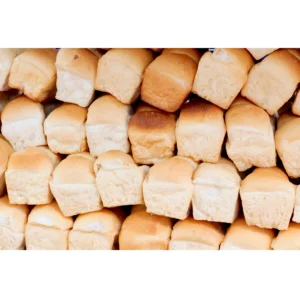
The Best Store-Bought Bread Brands in Canada
We covered some of the most popular bread brands that have been on the market for decades and earned approval among Canadians.
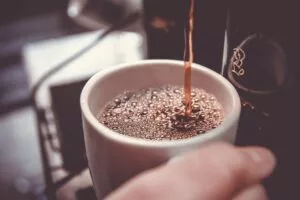
The Best Coffee Makers in Canada
How do you like your coffee? We’ve ranked the best coffee makers for every type of person.
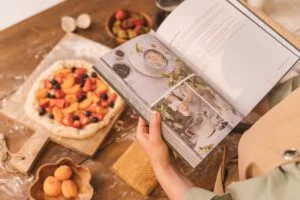
The Best Cookbooks You Can Find in Canada
Finding inspiration to cook is difficult – but these books offer recipes you will be excited to cook and especially eat.
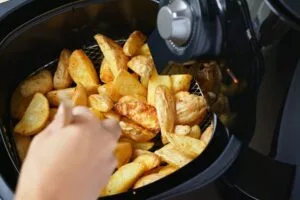
The Best Air Fryers in Canada
Compare the best air fryers in Canada, and find out how you can make eating healthy juicier and crispier.
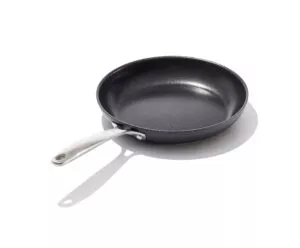
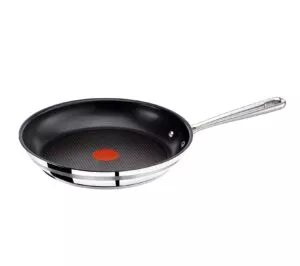
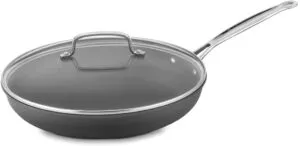

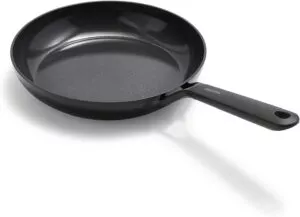


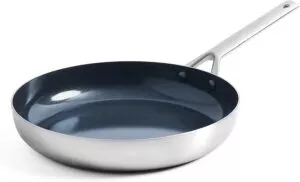

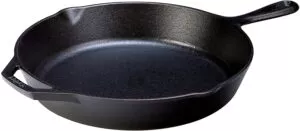


exact allergy pills best allergy over the counter best allergy pill for itching